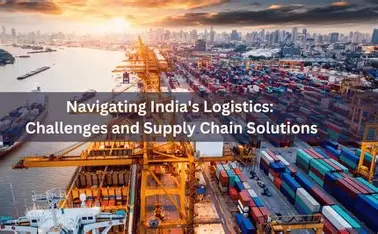India is confronting fresh supply chain disruptions that threaten to slow economic growth and reshape national policy priorities. Delays in moving essential goods, rising transportation costs, and shifting global trade patterns are putting sustained pressure on key sectors, from manufacturing to agriculture. As 2025 advances, policymakers face the urgent task of keeping the economy on track while simultaneously building long-term resilience.
These disruptions stem from both international and domestic triggers. On the global front, persistent shipping backlogs, fluctuating fuel prices, and increasingly restrictive import regulations have created choke points for Indian exporters and manufacturers. Domestically, infrastructure gaps, unpredictable weather patterns, and recurring labor shortages have amplified the strain on supply chains. Consequently, businesses are facing higher operating costs, reduced reliability in delivery schedules, and lower predictability in procurement.
The government is responding with targeted measures to ease pressure and restore stability. Authorities are upgrading port operations to reduce congestion, offering incentives to boost local manufacturing capacity, and expanding cold storage infrastructure to protect agricultural products during transport. Furthermore, they are streamlining customs procedures to improve cargo clearance times. However, analysts note that uneven implementation and administrative bottlenecks are slowing the overall impact of these initiatives.
Supply chain instability is creating direct risks to India’s economic ambitions. If exporters lose competitiveness due to delays and elevated costs, trade deficits could widen, weakening external balances. Likewise, persistent bottlenecks could slow manufacturing growth, which remains central to India’s long-term development plans. As a result, investors are closely watching how effectively India can navigate these logistical challenges while maintaining momentum in production and trade.
Experts emphasize that India must combine short-term interventions with deep structural reforms. Strengthening logistics corridors, diversifying import sources, and investing in advanced digital supply chain management tools can reduce vulnerability to future shocks. Additionally, improving multimodal transport connectivity and fostering public–private partnerships in infrastructure development could accelerate resilience-building efforts. The nation’s ability to adapt swiftly to changing trade realities will determine whether it can sustain growth and secure its role as a major player in the global economy.
India’s supply chain challenges are also sending ripple effects far beyond its borders. Delays in production and export are disrupting industries in countries that rely heavily on Indian goods, including pharmaceuticals, textiles, and processed foods. In today’s interconnected global economy, India’s success in overcoming these disruptions will not only influence its own growth trajectory but also shape trade flows, manufacturing stability, and economic confidence across multiple regions.



